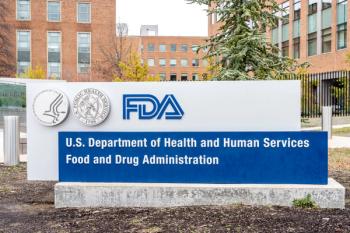
Site Satisfaction Is the New Competitive Advantage
Key Takeaways
- Payment-related issues in clinical trials persist, causing financial strain and eroding trust between sites and sponsors, impacting site availability.
- Industry efforts to standardize contracts and payment processes have not yet alleviated lengthy payment cycles and opaque terms for sites.
Clinical trial sites face persistent payment delays and complex processes, risking their viability and impacting drug development. Solutions prioritize transparency and flexibility.
Payment-related issues in clinical trials remain among the most persistent and damaging problems across drug development. Despite decades of industry awareness, sites continue to struggle with unclear payment terms, prolonged budget negotiations, and inconsistent communication between sponsors and contract research organizations (CROs). All too often, getting paid on time feels less like an expectation for sites and more like a rare privilege.
Christi Witte, director of research at Principle Research Solutions, feels the pain of these challenges. “We are a small, six-person site so cash flow matters,” she said. The systemic issues that are the foundation of such delays have vexed Witte for years. “Everyone works in siloes in clinical trials,” Witte continued, “so, if you are not talking to the right person, he or she has no way of answering payment questions.”
The erosion of trust created by disorganization can have serious longer-term effects, such as disgruntled sites refusing to work with certain sponsors, which can lead to an outsized impact in research environments where the number of qualified sites continues to shrink. Sites are shared resources, but there are fewer available to support research today.
The Society for Clinical Research Sites (SCRS) has
Industry groups such as TransCelerate BioPharma have made meaningful strides toward standardizing contracts and payment processes, recognizing that inconsistent practices are a root cause of site frustration and financial strain. But even with those efforts, most sites still face lengthy payment cycles and opaque terms. Structural progress has not yet translated into operational relief.
Competition for sites intensifies
Clinical trials are expected to grow more than seven percent year-over-year to keep pace with growing patient populations, but new site entries into the market are slowing. Even when new investigators attempt to enter the clinical trial market,20% drop out after only one trial.
Further complicating matters, the U.S. Food and Drug Administration (FDA) issued draft guidance in September 2024 for all multiregional oncology clinical trials (MRCTs) to include more Americans, recognizing a declining proportion of U.S. participants in MRCTs, which makes it more difficult to assess if results are applicable to American patients. The current administration signaled its doubling-down on these requirements at a May 2025 keynote address at the Food and Drug Law Institute Annual Conference by Grace Graham, FDA deputy commissioner for policy, legislation, and international affairs. Ms. Graham’s remarks made clear that, in the context of addressing the globalization of the pharmaceutical industry, FDA will “more closely scrutinize global clinical trials that do not have a significant portion of U.S. patients.”
Combined, these issues compound the competition for sponsors and CROs seeking to contract with qualified investigators from a shrinking pool of U.S.-based research sites.
Even though the U.S. has a higher clinical trial density per capita compared to other countries, this is not a measure of the site to trial proportion. Last year, the American Society of Clinical Oncology (ASCO)reported 6,710 open trials across just 1,836 sites, showing a ratio of approximately 3.7 trials per site. Trials increased by 4%, whereas sites decreased by 3% annually per capita from 2017 through 2024. An upside is the increasing trend of decentralized and community-based trials means a larger proportion of trials can now be conducted outside of traditional settings, impacting the distribution of sites.
Financial pressures are a key factor forcing sites out of clinical trials and keeping new entrants from replacing them, creating an imbalance in the number of available sites for the number of trials. It’s a classic case of supply and demand, putting the onus on sponsors and CROs to find ways to attract experienced sites while keeping them satisfied, and enticing future work on trials.
Trials are getting (over)complicated
Clinical trial complexity has ballooned over the last decade, with more endpoints, decentralized/digital components, personalized genomic data, and advanced therapeutic modalities increasing the administrative burden that sites face.
Oncology and rare disease studies involve intensive data capture and coordination across multiple systems. Today, a typical oncology study can require sites to use up to 17 different technology systems in addition to their own. Each system is designed with sponsors or CROs in mind, leaving sites to juggle multiple logins, inconsistent processes, and endless manual reconciliation. Rather than making operations easier, technology often adds to the burden.
“There is no normal way of handling payments,” Witte explained. “Everybody recreates the wheel with every trial. Nobody is working together to try and streamline processes, so sites don’t require so many ways of being paid.”
The other bottleneck: Contracts and budgets
Delays are not limited to payments either. Clinical Trial Agreements (CTAs) and budget negotiations are themselves complex, multi-stakeholder processes that slow study startup. What was once a relatively straightforward contracting exercise, has evolved into an extended negotiation over complex assessment structures, countless conditional procedures and site costs, and decentralized components. Global challenges and local requirements further complicate matters, extending the runway to site activation.
During and after Covid, the proliferation of hybrid and decentralized trial models introduced new budget categories––from home health visits to remote monitoring technology. While these innovations improve patient access, they also make contracting and financial administration more complicated.
For sites, the uncertainty is costly.
“How you set up what is invoiceable is a mystery to us until we get paid,” Witte said. “Sometimes sponsors set maximums for certain line items, but we don’t know until a payment arrives, and by then, we may already have lost money on the table.”
Stop force-fitting; Meet sites where they are
For clinical research to remain sustainable, the industry must rethink its approach to these issues. The fundamental principle should be simple: getting paid should be routine, not complicated. That means re-orienting systems and processes around site realities, not sponsor convenience. Sites vary widely in their digital sophistication, and many still prefer to use spreadsheets and email rather than specialized portals. Forcing them into rigid workflows only adds friction.
By creating digital ‘off-ramps,’ sponsors can allow sites to continue using familiar tools, with the data later absorbed back into a centralized platform. Likewise, automation can be applied to streamline routine administrative tasks such as budget tracking or invoice reconciliation without disrupting how sites already operate. The goal is not to change how sites work, but to make their work easier, faster, and more transparent for everyone involved.
The solution lies in flexibility. Sites need to be able to work in whatever formats make sense for them, whether that’s a spreadsheet or an email-based exchange, and not forced into rigid systems designed primarily for sponsors. Fortunately, this is where modern technology thrives.
Cloud-based, AI-powered systems provide a mechanism to facilitate the entire process more efficiently and with built-in flexibility. Interactions with AI agents rather than portals or machine consumption of PDF protocols and clinical trial agreements are now replacing manual, redundant data entry. Modern platforms can still deliver the transparency and control that sponsors and CROs require while accommodating these varied workflows. Technology plus experienced people behind the technology are critical to facilitate the last-mile from AI to human interaction.
The human dimension
The financial and operational challenges sites face have human consequences. Staff morale suffers when payments are delayed or when administrative demands outstrip capacity. In smaller community sites, cash-flow challenges can even threaten salaries or force cutbacks on patient support services.
Conversely, when payments are prompt and transparent, the effects are immediate. Site leaders often describe the relief gained from knowing exactly which visits or patients a payment covers, or receiving proactive notifications that keep all stakeholders aligned. These simple improvements save time, build trust, and strengthen long-term relationships between sites and sponsors.
Site satisfaction as a strategic priority
The industry has been talking about site satisfaction for years, but with increasing complexity and competition, we are now at a breaking point. Sponsors and CROs that fail to address site payment and contracting challenges risk losing access to the very partners who make trials possible.
The path forward is not mysterious. It begins with transparency and consistency, ensuring that sites are paid accurately and on time without the guesswork that so often undermines trust. Equally important is the adoption of flexible engagement models and digital tools that meet sites where they are by acknowledging the diversity of their workflows, and allowing them to operate in the ways that work best for them. Technology should simplify rather than complicate the process and reduce the administrative weight on sites. Sustainable progress will depend on collaboration across the industry, standardizing processes where possible and sharing efficiencies that benefit sponsors, CROs, and sites alike.
Getting paid should not be a cause for frustration, nor should it determine whether a site stays in business. It should be the baseline expectation for every trial. And when sites are satisfied, they are far more likely to stay engaged, continue their partnership, and ultimately to help bring new therapies to patients faster. That is an outcome that none of us can afford to delay.
Kevin Williams is Executive Vice President, Chief Strategy Officer, and co-founder of Ledger Run.
Newsletter
Lead with insight with the Pharmaceutical Executive newsletter, featuring strategic analysis, leadership trends, and market intelligence for biopharma decision-makers.





